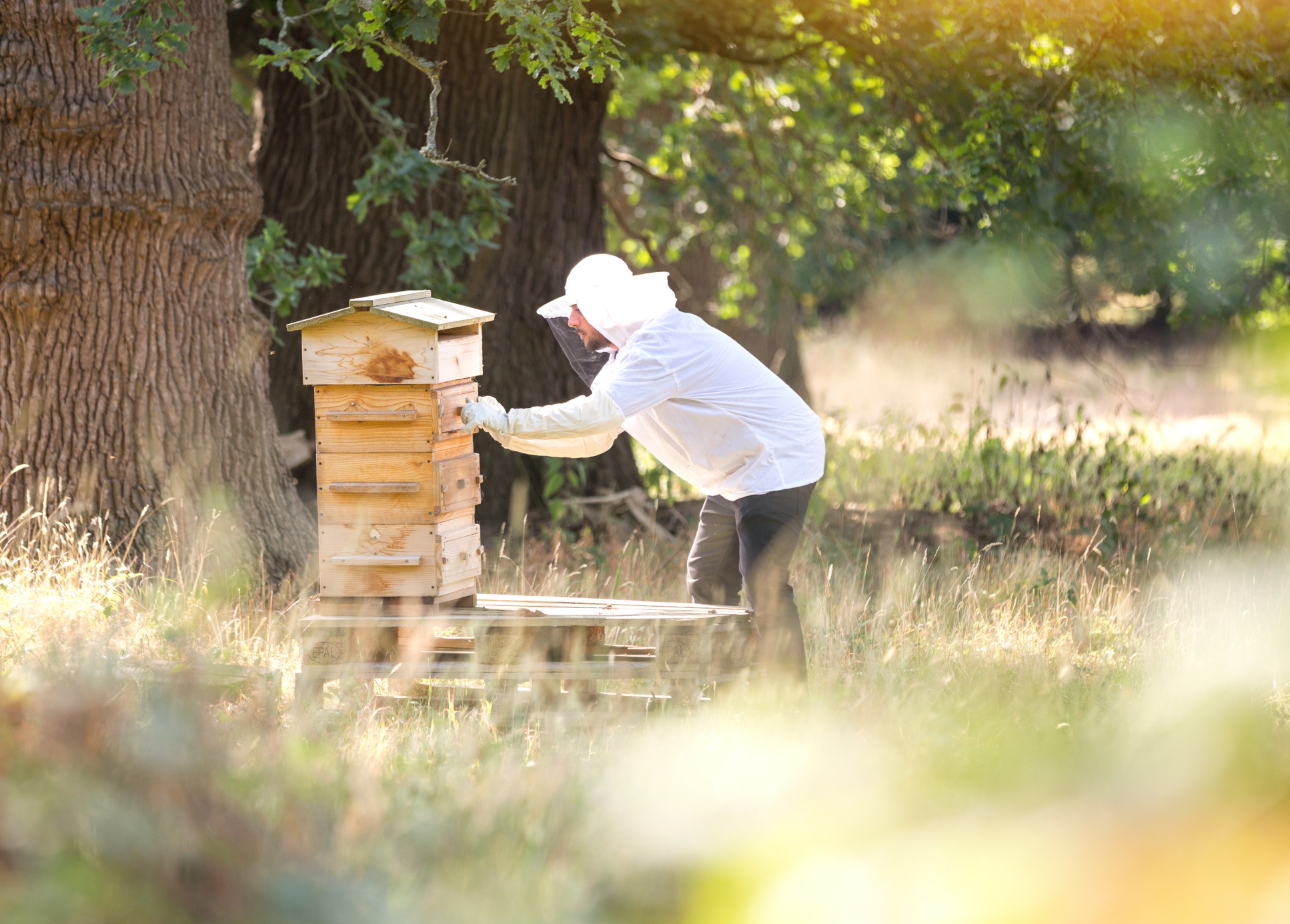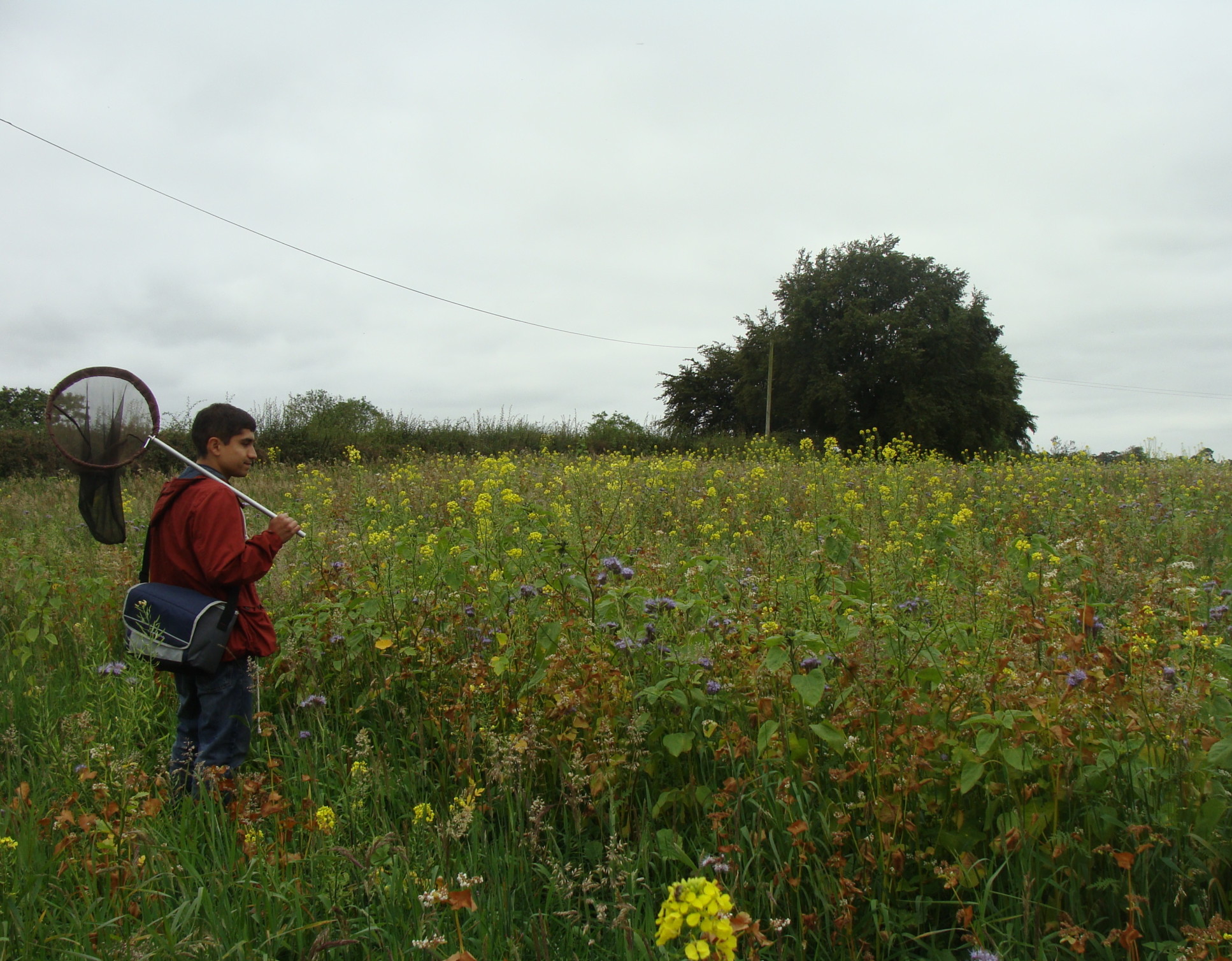
Dan Weill Photography

Bees are in decline because of intensive farming, pesticide prevalence and climate change – but human welfare depends on them
If you were to guess which animals are worth hundreds of billions of pounds to the agricultural industry, the humble bee and its fellow insect pollinators may not be your first thought. But that is the estimated value of these tiny creatures, according to Dr Richard Gill, a Senior Lecturer at Imperial College London and leading expert on bees and other insects. Sadly, humans are putting them at risk, along with the sustainability of our future food supply.

“Bees are of major global importance, not only to wild flowers but, also to crops. So, trying to protect species is of ecological and economic significance,” Dr Gill says.
The EU estimated that pollination services offered by insects, particularly bees, were worth 153 billion Euros or £131 billion – a tenth of the value of world agriculture – a decade ago. Meanwhile the US Food and Drink Administration has suggested the value of crops replying on pollinators, including bees, could be as much as US$577 billion, or £410 billion, a year.
Bees are so essential to our existence that four years ago the United Nations decided that every year 20 May would become World Bee Day. To mark the event this year, Dr Gill tells us why bees are at risk, what we can do to protect them and about his team’s latest research into a species that our lives literally depend on.
The importance of Bee-ing
A UN report brings together findings highlighting that 90% of the world’s wild flowering plant species depend on animal pollination, along with more than 75% of the world’s food crops and 35% of global agricultural land.

Distressingly the UN report also shows that almost 35% of invertebrate pollinators, particularly bees and butterflies, face extinction globally because of human activities. Likewise, 17% of vertebrate pollinators, including bats and hummingbirds, are under threat. If this trend continues, nutritious crops, including fruits, nuts and many vegetables, most of which require pollination, will need to be substituted by crops like rice, corn and potatoes, which are either self-pollinated or pollinated by the wind. The consequence will be imbalanced diets. So, Dr Gill explains, protecting pollinators is essential to preserving our global food supply and cultivating in a sustainable manner.
Bee aware: Dr Gill’s tips for safeguarding bees
- Provide food for bees: “If you have a garden – make sure it contains a diverse variety of plants in both the flower beds and lawns. Variation is good. People tend to like to keep their lawns neat – but lawns have good resources – including dandelions, daisies and clover – that are important for pollinating insect communities. Wild patches that allow dead nettles to grow are great as these are a herbaceous flowering plant with white flowers that are great for bumblebees - with the added advantage that these nettles don’t sting. But if you don’t want to rewild your whole garden, just keep a patch unmown and natural – that helps pollinators. Try to attract a diversity of pollinators – not just bees. If you have some wild areas, you will attract insects, such as ladybirds and parasitic wasps, and they help to eat garden pests, such as aphids.”
- Choose your flowers carefully: “Whether you have a garden or just a window box – try to pick nectar and pollen rich plants,” says Dr Gill. “Some plants are so artificially selected and over-bred that they produce very little or inaccessible pollen, for example pompom dahlias. Lavenders and herbaceous plants like rosemary and thyme are wild and natural. Not are only are they great for your favourite recipes, but also great for attracting pollinators, particularly solitary bees, when they flower.”
- Offer a bee house: “Cavity nesting bee houses are great for attracting solitary bees – but make sure there is a back panel resulting in the tubes having a dead-end. In my personal experience, it’s best if they are in a location that gets a mix of shade and sun – ideally South East or South West facing. A bit of shade makes sure they don’t overheat in the full sun, but avoid full shade as that may be too cold,” advises Dr Gill.
- Try to avoid chemicals: "If you avoid chemicals in your garden, that is great. If you think you need to apply it, know what you are applying and read the ingredients. If you're concerned, look up the name online, allowing you to weigh up what you want versus what we need," Dr Gill stressed. "Protecting plants is no doubt important, but it it's to make a garden look 'neat' then is is worth it to pollinators and other garden wildlife?"
- Find out more: For even more tips you can attend an online event organised by the UN – Bee Engaged – Build Back Better for Bees at 1pm – 2.30pm on 20 May.
Bee factual
Bees are among the hardest working creatures on the planet. A honeybee foraging trip can be up to 6 miles, and they make many tens of trips a day.
They carry pollen from one flower to another, which is important for the reproduction of the plant. Pollinated plants produce more fruit and seeds.
Three in four crops worldwide that produce fruit or seeds for human consumption or use depend partially on pollinators, including bees.
There are 25,000 bee species worldwide and 250 bee species in the UK – 25% are social bees, the rest are solitary or parasitic bees.
Bees also have cultural significance and have inspired operatic composers. They also symbolise industriousness and teamwork and have democratic societies with roles for the Queen and workers.

Be Vigilant: what government and industry need to do
We need international funding for research to fill the large gaps in our insect pollinator datasets. For instance, getting data to understand past responses to environmental changes and human actions, allows us to better predict about future responses,” says Dr Gill who was invited to speak at a Parliamentary event last year on insect decline about new technologies to achieve this, and who has been studying more than 20,000 museum bee and butterfly specimens to help fill such gaps.
He explains that the IUCN Red List of Threatened Species has many gaps in its records for bees and other insects: “At least half of the bee species we know about are data deficient. Dr Gill is also an adviser to the X:Polli:Nation citizen science project.

Meanwhile, Dr Gill stresses that applications of pesticides in agriculture should be done in an informed manner. Targeted applications in particular places and times in the season can increase the control of destructive pests and avoid accidentally killing off valuable pollinators. He stresses: “While big crop losses can be devastating for farmers and the use of pesticides does contribute to the security of our food supply, we must always ask whether prophylactic and ubiquitous use of pesticides is necessarily required and, if possible, avoided across the landscape.”
Bee biodiverse
It is not just bees that are under threat. Since 1970 there has been an average 60% decline in animal populations and more than a million species are believed to be on the verge of extinction, according to a recent feature published by Imperial College London.
Dr Will Pearse, a senior lecturer in the Department of Life Sciences at Imperial, explains: "We are at the beginning of a mass extinction event. What we're in danger of losing is not just the species themselves, but also the services that they provide us."
The Red List of species published by the IUCN estimates that 28% of species are threatened with extinction and the current rate of biodiversity loss is 1,000 times higher than the historical rate.
Alyssa Gilbert, Director of Policy and Translation at the Grantham Institute – Climate Change and the Environment, says: “This is an important year for international environmental commitments – China is hosting the United Nations Framework Convention on Biological Diversity (UNCBD) in the autumn, followed by the Glasgow Climate change conference in November.
“The UNCBD meeting should see countries commit at the highest level to protecting biodiversity and species in all of its forms, whilst the Glasgow negotiations will focus specifically on reducing greenhouse gas emissions to slow climate change, and adapting to a changing climate. It is important that approaches to tackle climate change, which often require or make use of land or nature – are fully joined up with the preservation of complex ecosystems. In all cases, these commitments should not loose slight of some of these smallest, and most important creatures.”
The forthcoming Environment Bill is expected to contain a legally binding target to halt the decline of nature and wildlife by 2030. 
Bee focused: Imperial’s latest research on bees – and butterflies
- Dr Gill and his PhD student Danny Kenna team are investigating how climate change and pesticide exposure are affecting the flight ability and foraging performance of bees in a study funded by the National Environment Research Council (NERC) and the Royal Society. “The flight performances of bees, underpins their job of pollinating flowers, so we are trying to understand how future scenarios of warming and pesticide use will impact whether bees survive in the future. With changes in climate and the need for us to reduce meat consumption and replace with more plant-based protein sources, we are likely to see increases in crops that are dependent on pollinators,” explains Dr Gill. This forthcoming study will give a broader perspective on previous studies the team completed on the effect of pesticides on bees genes and work showing pesticides can reduce the distance bumblebees can fly to one third of the distance they could otherwise fly.
- Using micro CT scanning technology, Dr Gill and his PhD student Dylan Smith studied how bee’s brains develop and how growth is reduced if they are exposed to pesticides as babies (larvae). The research, funded by the NERC and Centre for Ecology and Evolution, found poor brain development can affect bees’ flight and their ability to pollinate plants. The research has used developments in micro CT scanning protocols made in their lab on reconstructing the brains of bees, followed by an analysis on baby bee brains from 2016, which lead to a study of baby bee brain development. Now, collaborating with researchers in Germany, the team have created a 3D bumblebee brain atlas to enable future researchers to map cells and neurons to the bee brain and study stress effects.
- Dr Gill, PhD student Aoife Cantwell-Jones and researcher Andres Arce, are working on a project looking at how bees and butterflies have responded to environmental impacts from humans, including changing land use and climate change, over the past 150 years. Funded by NERC and the British Ecological Society, this currently involves collaborating with museums around the UK and Europe, and in collaboration with the NHM London the use of the same DNA techniques to study ancient humans and woolly mammoths. Dr Gill’s team has already examined tens of thousands of specimens of bees and butterflies and there are hundreds of thousands more species yet to analyse.
- Along with PhD student Ana dos Ramos Rodrigues, Dr Gill is researching how bees cope with altered food availability combined with pesticide exposure as experienced in agricultural landscapes. The team spent more than a year painstakingly monitoring nearly 100 bumblebee colonies during the project funded by the Biotechnology and Biological Science Research Council and Marie-Curie. The research aims to understand how the timing of food income and pesticide exposure could have longer term effects on the quantity and quality of new queens and males being reared. Dr Gill says “we want to get to the bottom of why bees appear to do badly in agricultural sites despite flowering crops being available” as previous research he has been involved in has shown.
- Ongoing work in the Arctic (Lapland) by Dr Gill and his PhD student Aoife Cantwell-Jones is looking at how bumblebee communities are responding to climate change, and the effects this has on their interactions with flower species. Funded by NERC, the Grantham Institute – Climate Change and the Environment, Queckett Microscopical Club and EU INTERACT, Dr Gill’s team have helped to re-establish a century old transect, retracing the steps of past scientists to compare historic and contemporary bee data to understand the impacts in the most vulnerable biome in the world to climate change. Coincidentally, World Bee Day marks the first day of fieldwork for the third expedition year, where the team will hike daily up and down a mountain, seeking Arctic bumblebees amid the snowfields. Forthcoming work will show how changing climate is altering where and when the bees can be found and reshaping interactions with their host Arctic plants.

Credit: Ana Ramos Rodrigues
Supporters



Article text (excluding photos or graphics) © Imperial College London.
Photos and graphics subject to third party copyright used with permission or © Imperial College London.
Reporter

Linsey Wynton
The Grantham Institute for Climate Change





Leave a comment
Your comment may be published, displaying your name as you provide it, unless you request otherwise. Your contact details will never be published.